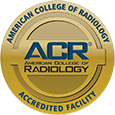The Paradigm Shift In Obstetric Care
It is now widely accepted that placental health is crutial to the lifetime health of both the mother and the child - preterm preeclampsia is a placental disease that jeopardizes that health.
Recently, the American College of Obstetricians and Gynecologists (ACOG) and the US Preventative Services Task Force have recommended early aspirin treatment for patients at increased risk for preeclampsia (PE).
How to Best Establish Preeclampsia Risk and How to Best Determine Who Will Benefit from Early Asprin Treatment
The medical evidence is now clear. Personalized risk based First Trimester Preeclampsia Screening or FTPS (Fetal Medicine Foundation & NTD / Eurofin's Maternal Fetal Screen T1) is the most accurate way to identify high risk patients and is profoundly superior to ACOG's guidelines.
About FTPS
-
FTPS is performed between 11w3d - 13w6d. It is best performed concurrently with nuchal translucency / nasal bone screening. Down syndrome screening but can also be performed at this time as a stand alone test.
-
FTPS assigns an individualized PE risk employing maternal blood pressure, BMI, ethnicity, personal and family history of PE with multiple biochemical analytes and accredited uterine artery Doppler pulsatility.
Hudson Valley Radiology Associates' Centers for Maternal, Fetal and Placental Health are the regions only accredited providers of Fetal Medicine Foundation & NTD / Eurofin's First Trimester Preeclampsia Screening (FTPS) test, ' Maternal Fetal Screen T1.'
FTPS is the earliest and single most comprehensive maternal, fetal and placental health evaluation casting a wide net for aneuploidy, preeclampsia, preterm delivery, congenital heart disease, low birth weight, fetal loss and stillbirth.
Screenings Include:
-
IRA provides same day results to you and your patients.
-
Nuchal translucency (NT), nasal bone and biochemistry achieves 95% detection sensitivity for Down syndrome at a 5% false positive rate.
-
Positive TR increases DSR by likelihood ratio of approximately 6. Recommend TR assessment for those patients with elevated DSR (after NT, NB and biochemistry first trimester screen) who are ambivalent and/or decline karyotyping.
-
We are the longest and most experienced provider of first trimester screening services in the region.
-
FTPS is an evidenced based effective test detecting high risk patients. Early detection and treatment with low dose aspirin is an evidence based strategy reducing maternal and fetal morbidity.
-
The leading causes of perinatal death are preterm birth, fetal abnormalities and impaired placentation leading to preeclampsia and fetal growth restriction. FTPS is performed at 11-14 weeks concurrently with first trimester aneuploidy screening.
2D fetal cardiac ultrasound is performed for all 18-22 week detailed and genetic/Level II ultrasounds.
-
We document and report the exclusion of the four most common patterns of congenital heart disease.
-
Congenital heart disease is the most common and most serious of all malformations with an incidence of 1 in 300 live births.
-
Aneuploidy risk assessment necessitates fetal cardiac ultrasound because 50% of Down syndrome fetuses and 90% of trisomy 18 and 13 fetuses have congenital heart disease.
-
Enlarged NT regardless of karyotype or low risk assignment confers 6-8 times increased risk for non-cardiac malformation and congenital heart disease.
-
What defines an enlarged NT?
- Delta NT values of greater than 1.5 mm
- NT is greater than 3 mm -
Earliest detection of malformation
-
Powerful reassurance when normal
-
Other indications- obesity, insulin dependent diabetics, prior pregnancies with anomalous fetuses
Our unique obstetrical ultrasound protocols when negative provides 70% risk reduction for Down syndrome and 95% risk reduction for trisomy 18 and 13 in comparison to pre-test risk as assigned either by maternal age, maternal serum biochemical screen or first trimester screen.
-
A 38-year-old patient who declined biochemical screen and karyotyping has a maternal age assigned Down syndrome risk (DSR) of 1:129. Our negative Genetic obstetrical ultrasound reduces this risk to 1:376, similar to that of a 33-34 year old.
-
A 28-year-old patient with an abnormal biochemical screen DSR of 1:98 will be risk reduced to 1:286 to that of a 34-year-old.
-
Genetic ultrasound makers- quantitative risk elevation based on the likelihood radio (LR) assigned to each marker. Each marker has an assigned likelihood radio (LR) by which Down syndrome risk is elevated
-
For example, echogenic intracardiac focus (LR 1.8) converts pre-test DSR of a 35-year-old, 1:274 to 1:153, similar to a 37-year-old.
All 18-22 week detailed obstetrical ultrasound studies include color Doppler identification of placental site of cord insert.
-
Demonstration of a normal umbilical cord insert into placenta excludes the typical situation of vasa previa associated with velamentous cord insert
-
Vasa privia is among the most lethal fetal conditions
1) 75% of incidence of fetal exsanguination when vasa previa vessels tear
2) In absence of bleeding, 50-60% perinatal loss rate from compression or occlusion of cord vessels and extreme compromise of placental circulation.
3) Velamentous cord insert and vasa previa is 6-8 times more frequent in multi-order pregnancies. -
Incidence of vasa previa 1:2500 in general population. Although this incidence is significantly less than other pathologies for which we screen, it is unique among potentially lethal fetal pathologies- if recognized, a normal outcome can be expected with planned deliver before onset of labor.
Maternal uterine artery Doppler at 18-22 weeks optimizes risk assessment for recurrent clinically significant complications of uteroplacental vascular insufficiency in multiparous patients: stillbirth or early neonatal death, placental abruption, pre-eclampsia, SGA birth weight less than the 5th percentile.
-
Positive predictive value of 70% with a 90% specificity
-
Negative predictive value of 93% confers low risk status on women who were initially through to be high risk based on prior obstetrical history
Dr. Cohen and Dr. Ossip have over 40 years combined experience consulting patients for both fetal cardiac and extra-cardiac malformations. Patients benefit from hearing information from multiple specialists beginning with the physician who “hands-on” scanned their anomalous fetus.
Consultations include:
-
Pictorial and verbal explanation of malformations
-
Impact on antenatal and postnatal well-being
-
Need for karyotyping and multispecialty consultation
-
If termination is an option- dilatation and evacuation versus induction delivery. Induction delivery provides opportunity for an autopsy- established syndromic diagnosis- optimizing genetic counseling for future pregnancies and optimizing psychological closure.
-
Fetal MR is increasingly essential to fully characterize fetal anomalies seen on ultrasound, optimize antenatal pre-surgical assessment and optimize counseling.
-
Our high risk obstetrical ultrasound services are uniquely potentiated by our unparalleled experience in fetal MR.
-
Our fetal MR program is under the supervision of Daniel J. Cohen, MD. Dr. Cohen is a board certified radiologist with subspecialty fellowship training in MR and obstetrical ultrasound with over 20 years of experience in hands-on high risk maternal fetal problem solving ultrasound. There is no other local provider in fetal MR services that can bring to every fetal MR case this combined depth of training and experience.
-
Umbilical and middle cerebral arterial abnormalities reflect chronic hypoxia and influence the frequency of fetal monitoring.
-
Ductus venosus and umbilical vein abnormalities reflect academia and usually demand hospitalization and depending upon gestational age, delivery.
-
Increasing incidence of adherent placentation accompanying increasing use of cesarean section and increasing age of the gravid population.
-
Optimize risk assessment and diagnosis with a multimodality approach for pregnancies at risk. 80-90% sensitivity. Less than 5% false negative rate. 15-20% false positive rate.
-
First trimester identification of a low implanted gestational sac is a significant risk factor, in particular for patients with prior c-section
-
2D characterization and Doppler analysis of intraplacental lacunae- most reliable sign in risk assessment
-
MR for posterior placenta previa and for patients with equivocal ultrasound findings and/or who image poorly with ultrasound.






